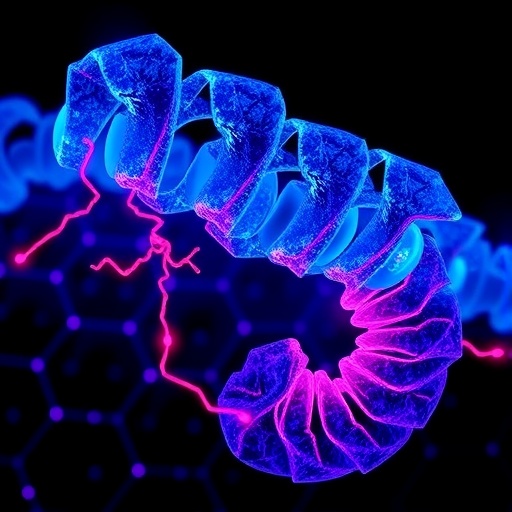Credit: Video courtesy of Jefferson Chan, University of Illinois
CHAMPAIGN, Ill. — Areas of hypoxia, or low oxygen in tissue, are hallmarks of fast-growing cancers and of blockages or narrowing in blood vessels, such as stroke or peripheral artery disease. University of Illinois researchers have developed a way to find hypoxic spots noninvasively in real time.
The researchers developed an oxygen-sensitive molecular beacon that emits ultrasound signals in response to light, a process called photoacoustic imaging – a less invasive, higher resolution and less costly method than the current clinical standard, which uses radioactive molecules and positron emission tomography scans. In a paper published in Nature Communications, the researchers demonstrated the probe's ability to image hypoxic tumors and constricted arteries in mice.
"We could give a doctor a three-dimensional, real-time view into the tissue to guide surgical procedures and treatment plans," said chemistry professor Jefferson Chan, the leader of the study. Graduate student Hailey Knox and bioengineering professor Wawrzyniec Lawrence Dobrucki were co-authors of the paper.
"The ability to detect this in a way that doesn't require surgery or doesn't rely on indirect methods is really powerful, because you can actually see it as it's developing," Chan said.
Current methods for detecting hypoxia in tissue can only identify chronic hypoxia, and thus cannot help doctors find aggressive cancers or acute conditions like a stroke that require immediate intervention, Chan said. Such methods are limited to invasive procedures involving large electrode needles or indirect imaging with radioactive probes, which has the added challenges of off-target activation and interference.
The molecular probes Chan's group developed only become active when oxygen is lacking. When excited by light, they produce an ultrasound signal, allowing direct 3-D imaging of hypoxic areas. They tested the system on cell cultures, and then in live mice with breast cancer and mice with constricted arteries in their legs.
"The system that we used in this study is a preclinical system for animals. However, in a clinical setting, you can take a regular ultrasound machine and equip it with a light source – you can buy LEDs for around $200 that are powerful enough and safe for clinical applications," Chan said. Physicians would administer the photoacoustic molecules to the patient, either by injecting into a vein or directly to a tumor site, then use the modified ultrasound machine to visualize the area of interest.
The researchers found that their photoacoustic method could find hypoxia mere minutes after a mouse's artery was constricted, showing promise for quickly finding stroke sites or blood clots in deep tissue. In the mice with cancer, the probes enabled detailed, 3-D ultrasound imaging of hypoxic tumors.
See a YouTube video of a 3-D rendering of a hypoxic tumor.
"We know that a lot of tumors are hypoxic, so many new treatments have been developed that become activated in oxygen-deficient conditions. But they have been inconsistent in clinical trials, because not all tumors are hypoxic," Chan said. "This gives scientists and physicians a way to noninvasively look inside tumors and determine whether a patient's tumor is hypoxic and they would be a good candidate for a new drug. If the tumor doesn't look very hypoxic, they should go into a different treatment plan."
Another advantage is the low cost of producing the molecules and their long shelf life, the researchers said. They can stay stable for years, whereas radioactive molecules must be used soon after manufacturing and require special training for use.
Chan's group is exploring other types of photoacoustic molecules that could image other conditions. For example, they are working on probes that can detect specific cancers so they can find any places where cancer has spread or metastasized in a patient's body.
"Not only can you detect a cancer and discover its properties, but it has a lot of avenues for patient care. We can look at the whole iceberg instead of the tip of the iceberg," Chan said.
###
This work was supported by a Sloan Fellowship awarded to Chan from the Alfred P. Sloan Foundation.
Editor's notes: To contact Jefferson Chan, call 217-300-2767; email: [email protected].
The paper "A bioreducible N-oxide-based probe for photoacoustic imaging of hypoxia" is available online. DOI: 10.1038/s41467-017-01951-0
Media Contact
Liz Ahlberg Touchstone
[email protected]
217-244-1073
@NewsAtIllinois
http://www.illinois.edu
Original Source
https://news.illinois.edu/blog/view/6367/587715 http://dx.doi.org/10.1038/s41467-017-01951-0




